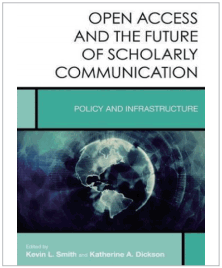Articles
- Page Path
- HOME > Sci Ed > Volume 4(1); 2017 > Article
-
Book Review
Open Access and the Future of Scholarly Communication: Policy and Infrastructure Open Access and the Future of Scholarly Communication: Implementation -
Kihong Kim

-
Science Editing 2017;4(1):46-47.
DOI: https://doi.org/10.6087/kcse.91
Published online: February 20, 2017
Department of Physics, Ajou University, Suwon, Korea
- Correspondence to Kihong Kim khkim@ajou.ac.kr
• Received: January 26, 2017 • Accepted: February 3, 2017
Copyright © Korean Council of Science Editors
This is an open access article distributed under the terms of the Creative Commons Attribution Non-Commercial License (http://creativecommons.org/licenses/by-nc/4.0/), which permits unrestricted use, distribution, and reproduction in any medium, provided the original work is properly cited.
- 15,375 Views
- 166 Download


Figure & Data
References
Citations
Citations to this article as recorded by 


 KCSE
KCSE
 PubReader
PubReader ePub Link
ePub Link Cite
Cite

